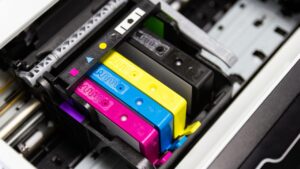To get power from a car battery, connect the battery to your device using appropriate cables. Ensure the connections are secure for safety and efficiency.
Car batteries are essential for starting vehicles and powering electrical systems. They store electrical energy as chemical energy and release it when needed. Understanding how to extract power from a car battery can help you in emergencies or DIY projects.
Whether you need to jump-start another vehicle, power tools, or run lights, knowing the correct methods is crucial. Safety is paramount, so always use appropriate cables and gear. This guide will explain the necessary steps and precautions to ensure efficient and safe power extraction from your car battery.
Introduction To Car Battery Power
Understanding how to get power from a car battery is essential. A car battery is more than just a starter. It plays a vital role in the overall function of the vehicle. Learning about its power can help in various situations.
The Role Of A Car Battery
The car battery serves multiple functions:
- Starts the engine.
- Powers electrical components.
- Stores energy for later use.
Without the battery, a car cannot function. It provides the necessary electrical energy. This energy fuels everything from lights to the radio.
Basics Of Electrical Power In Vehicles
Electricity in cars flows through a system. Here are some key points:
| Component | Function |
|---|---|
| Battery | Stores and supplies electrical energy. |
| Alternator | Charges the battery while the engine runs. |
| Starter | Ignites the engine using battery power. |
| Fuses | Protect electrical circuits from overload. |
Understanding these components helps in troubleshooting. Each part works together to ensure efficiency. A healthy battery is key to reliable power.

Safety First: Preparing To Use Car Battery Power
Using a car battery for power can be useful. Ensuring safety is crucial. Proper preparation helps prevent accidents and injuries. Follow these tips to stay safe.
Essential Safety Gear
Wearing the right gear is important. Here’s what you need:
- Safety goggles: Protect your eyes from acid splashes.
- Gloves: Use insulated gloves to avoid shocks.
- Long sleeves: Wear long sleeves to protect your skin.
- Closed-toe shoes: Keep your feet safe from heavy items.
Understanding Battery Risks
Car batteries hold a lot of power. They can be dangerous if mishandled. Here are key risks:
| Risk | Description |
|---|---|
| Electric Shock | Touching exposed terminals can cause shocks. |
| Acid Burns | Sulfuric acid can cause serious skin burns. |
| Explosion | Gas buildup can lead to explosions. |
Stay alert to these risks. Always handle batteries with care. Avoid short-circuiting the terminals. Keep metal objects away from the battery.
Check the battery for damage before use. Do not attempt to use a leaking or cracked battery.
Identifying Your Car Battery
Knowing your car battery is essential for powering devices. Proper identification helps in using the battery safely and effectively. Let’s explore battery types, specifications, and how to locate it in your vehicle.
Battery Types And Specifications
Car batteries come in various types. Each type has specific features. Here are the common types:
| Battery Type | Specifications |
|---|---|
| Lead-Acid | Most common; reliable; affordable |
| AGM (Absorbent Glass Mat) | Durable; vibration-resistant; higher performance |
| Li-ion (Lithium-ion) | Lightweight; high energy density; expensive |
Check the specifications on the battery label. Look for:
- Voltage: Usually 12 volts
- Cold Cranking Amps (CCA): Indicates starting power
- Reserve Capacity (RC): Length of time the battery can run
Locating The Battery In Your Vehicle
Finding the battery is simple. It is typically located in the engine compartment. Check these common spots:
- Near the front of the engine bay
- On the side near the fender
- Under a cover or plastic shield
If you have a trunk-mounted battery, look in the trunk. Check under the floor mat or side panels.
Always ensure safety. Turn off the vehicle before inspecting. Wear gloves and eye protection to avoid accidents.
Tools And Equipment Needed
Gathering the right tools and equipment is crucial. This will make power extraction from a car battery safe and efficient. Below are essential tools and specialized equipment required for the job.
Essential Tools For The Job
- Safety Gloves: Protect hands from acid and shock.
- Screwdriver Set: Useful for removing battery terminals.
- Wrench or Socket Set: Needed to loosen battery connections.
- Wire Cutters: For cutting wires as needed.
- Multimeter: Measures voltage and checks battery health.
Specialized Equipment For Power Extraction
Using specialized equipment ensures safety and efficiency.
| Equipment | Purpose |
|---|---|
| Battery Charger: | Recharges battery for further use. |
| Inverter: | Converts DC power to AC power. |
| Power Cables: | Connects devices to the battery safely. |
| Jump Starter: | Helps start vehicles with dead batteries. |
Ensure all tools are in good condition. Check for wear and tear. This will enhance safety while working with the battery.
Step-by-step Guide To Accessing Power
Accessing power from a car battery is simple and useful. Follow these steps to safely connect and extract power. Always prioritize safety and use the right tools.
Connecting To The Battery Terminals
Before connecting to the battery, ensure you have safety gear. Wear gloves and goggles to protect yourself.
- Locate the car battery. It’s usually under the hood.
- Identify the positive (+) and negative (−) terminals.
- Use a wrench to loosen the terminal bolts.
Follow these steps for a safe connection:
- Connect the red cable to the positive terminal.
- Connect the black cable to the negative terminal.
- Ensure all connections are tight and secure.
After connecting, check for any signs of damage on the cables.
Power Extraction Methods
Once connected, you can extract power using various methods. Choose the one that suits your needs best.
| Method | Description | Pros | Cons |
|---|---|---|---|
| Direct Connection | Use wires to connect devices directly. | Fast and easy access. | Risk of short circuits. |
| Power Inverter | Convert DC to AC for household devices. | Versatile for many devices. | May require additional setup. |
| Battery Charger | Charge other batteries or devices. | Safe and effective charging. | Slower than direct connection. |
Always monitor the battery voltage. Avoid draining the battery too low. This ensures the battery remains functional.
Using Power Inverters
Power inverters are devices that convert DC power from your car battery into AC power. This allows you to run various electronic devices while on the go. Understanding how to use them effectively can enhance your travel experience.
Choosing The Right Inverter
Selecting the right inverter is crucial for your needs. Consider these key factors:
- Power Rating: Check the wattage needed for your devices.
- Type of Inverter: Choose between pure sine wave and modified sine wave.
- Number of Outlets: Ensure it has enough outlets for your devices.
- Portability: Look for lightweight and compact models.
Here’s a quick comparison of inverter types:
| Type | Pros | Cons |
|---|---|---|
| Pure Sine Wave | Safe for sensitive devices | More expensive |
| Modified Sine Wave | Cheaper | May harm sensitive devices |
Connecting An Inverter To A Car Battery
Connecting an inverter to your car battery is straightforward. Follow these steps:
- Ensure the car is off.
- Locate the battery terminals.
- Connect the positive terminal of the inverter to the positive battery terminal.
- Connect the negative terminal of the inverter to the negative battery terminal.
- Double-check all connections for security.
- Turn on the inverter and test your devices.
Always remember safety precautions:
- Use insulated tools.
- Wear gloves to prevent shock.
- Keep the area dry.
Using power inverters can provide the energy you need. Enjoy your journey with all your devices powered up!
Maintaining Battery Health
Maintaining your car battery’s health is crucial for reliable performance. A healthy battery ensures your vehicle starts easily and runs efficiently. Proper care can extend its lifespan and avoid unexpected failures.
Charging Your Car Battery
Regularly charging your battery is essential. Here are some tips:
- Use a smart charger: This helps prevent overcharging.
- Charge regularly: Especially if you don’t drive often.
- Check connections: Ensure they are clean and tight.
Consider this table for charging frequency:
| Usage Frequency | Charging Recommendation |
|---|---|
| Daily | Every 3-6 months |
| Weekly | Every 6-12 months |
| Monthly | Every month |
Avoiding Common Battery Drain Issues
Preventing battery drain is vital. Follow these tips:
- Turn off lights: Always check your headlights.
- Limit electronics usage: Avoid using devices with the engine off.
- Regularly drive your car: Short drives can drain the battery.
Taking care of these aspects helps maintain battery health. Regular checks can save you time and money.
Real-world Applications
Using car batteries for power has practical benefits. They can provide energy in various situations. Let’s explore some of these real-world applications.
Emergency Power Supply Scenarios
Car batteries serve as reliable emergency power sources. Here are some common scenarios:
- Power outages: Use a car battery to run small devices.
- Camping trips: Provide light and charge phones.
- Disaster situations: Keep essential electronics running.
In emergencies, having a charged battery can make a difference. It ensures you stay connected and safe.
| Scenario | Devices Supported |
|---|---|
| Power Outage | Laptop, Phone, Lights |
| Camping | Portable Fridge, Lantern, Phone |
| Disaster | Radio, Flashlight, Phone |
Creative Uses Of Car Battery Power
Car batteries offer many creative power solutions. Here are some interesting uses:
- DIY Solar Systems: Connect a battery to solar panels.
- Electric Tools: Power tools for home projects.
- Mobile Workshops: Set up a workshop anywhere.
These creative applications show the versatility of car batteries. They can enhance your adventures and projects.
Troubleshooting Common Issues
Getting power from a car battery can be tricky. Issues may arise during the process. Identifying and resolving these problems is crucial. Here are solutions for common troubles.
Dealing With Power Fluctuations
Power fluctuations can disrupt your devices. Follow these steps to stabilize power:
- Check the battery voltage. Use a multimeter to ensure it is above 12.6 volts.
- Inspect the battery terminals. Clean any corrosion or dirt.
- Use a voltage regulator. This tool helps maintain steady power.
Here’s a quick reference:
| Voltage Range | Status |
|---|---|
| 12.6 – 12.8 volts | Fully charged |
| 12.4 – 12.5 volts | Partially charged |
| Below 12.4 volts | Needs charging |
Solving Connection Problems
Bad connections can stop power flow. Here are steps to fix this:
- Turn off all devices.
- Inspect all cables and connections.
- Ensure cables are tightly connected.
- Replace damaged cables immediately.
Check for these issues:
- Corrosion on terminals
- Loose connections
- Frayed wires
Using good quality connectors can enhance performance.
Legal And Environmental Considerations
Using power from a car battery involves important legal and environmental factors. Understanding these aspects helps ensure safe and responsible usage. Follow local laws to avoid penalties. Protect the environment by adopting eco-friendly practices.
Regulations On Battery Usage
Car batteries are subject to various regulations. These laws can vary by region. Here are key points to consider:
- Licensing: Some areas require a license to use car batteries for power.
- Safety Standards: Follow safety guidelines for battery handling.
- Storage Regulations: Store batteries in compliant containers.
- Inspection Requirements: Regular inspections may be necessary.
Check local laws to ensure compliance. Consult local authorities for guidance.
Eco-friendly Practices And Disposal
Battery disposal poses risks to the environment. Harmful chemicals can leak into soil and water. Follow these eco-friendly practices:
- Recycling: Always recycle car batteries at designated centers.
- Donation: Donate usable batteries to local organizations.
- Proper Disposal: Use certified disposal services for damaged batteries.
Consider using renewable energy sources whenever possible. This reduces dependency on car batteries. Opt for solar or wind power for sustainable energy.
Frequently Asked Questions
How Can I Safely Use Car Battery Power?
To safely use car battery power, ensure you have the right equipment. Use an inverter to convert DC to AC power. Always check voltage levels to prevent overload. Disconnect any devices when not in use to avoid draining the battery.
Regular maintenance can also prolong battery life.
What Tools Do I Need To Connect A Car Battery?
You will need a few basic tools to connect a car battery. A wrench or socket set is essential for loosening terminals. Additionally, insulated gloves and safety glasses are recommended for protection. A multimeter can help you measure voltage and ensure proper connections.
Always follow safety precautions when handling batteries.
Can I Power My Home With A Car Battery?
Yes, you can power small devices in your home using a car battery. However, it’s advisable to use an inverter to convert the current. This setup is ideal for temporary solutions or emergencies. Keep in mind that a car battery has limited capacity, so plan accordingly to avoid power loss.
How Long Can A Car Battery Power Devices?
The duration a car battery can power devices depends on its capacity and the devices’ power requirements. Typically, a fully charged car battery can last a few hours for small devices. Always calculate the total wattage to estimate how long your battery will last.
Monitor usage to prevent complete drainage.
Conclusion
Harnessing power from your car battery is practical and efficient. Whether for emergency use or DIY projects, understanding the process is key. Always prioritize safety and ensure proper connections. With the right knowledge, your car battery can provide the energy you need, making it a valuable resource in various situations.








